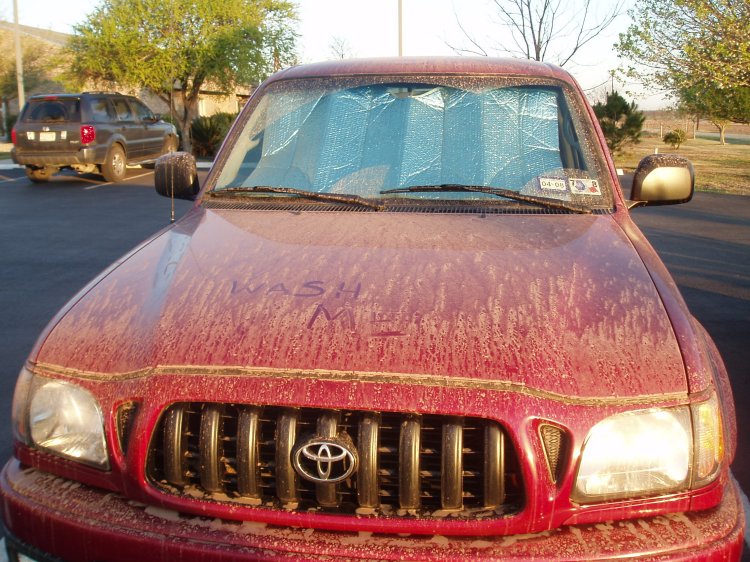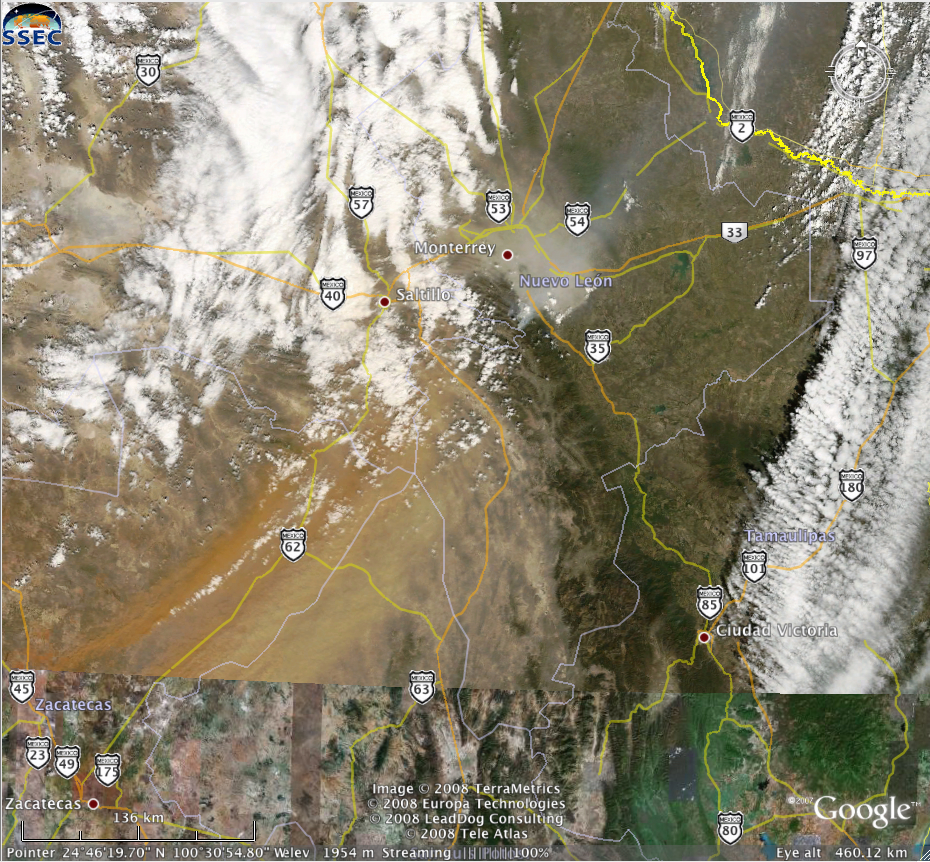Smoke and blowing dust in Mexico
Winds up to 60 mph associated with a strong cold front moving across the mountains of northern Mexico on 18 March 2008 were creating areas of blowing dust and sand, as well as fostering an environment favorable for wildfire activity. A comparison of AWIPS images of the MODIS visible channel, 1.3µm “cirrus detection” channel, 3.7µm “shortwave IR” channel, 11.0µm “IR window” channel, and 6.7µm “water vapor” channel (above) revealed the following: (1) the visible image depicted large “hazy” features, especially to the northeast of Zacatecas (MMZC) and to the south and southeast of Monterrey (MMAN); (2) the hazy features in the Zacatecas region showed up as light gray streaks on the “cirrus detection” image (since this channel also is very sensitive to light scattered from airborne particles such as dust/sand) and on the IR window channel (since these features aloft were cooler than the surrounding bare ground); (3) the 3.7µm shortwave IR image indicated several “hot pixels” (yellow to red colors) due to fires burning just south of Monterey; (4) water vapor image showed a widespread pattern of interfering “lee waves” caused by the strong winds interacting with the complex terrain.
A 250-meter resolution MODIS true color image from the SSEC MODIS Today site (below) helps to differentiate the composition of the various hazy areas: the fire smoke near Monterrey appears light gray, while the blowing dust/sand near Zacatecas has a distinct beige to light orange color (due to the soil types found in the plume source regions) — note the light orange color of the undisturbed soils in that area on MODIS true color imagery 2 days earlier.
The MODIS Aerosol Optical Depth (AOD) product from the SSEC IDEA site (below) showed that these plumes of smoke and dust/sand exhibited AOD values as high as 1.0 (red enhancement), extending all the way northeastward into Texas.
We received photos (below; photo 2; photo 3; photo 4; photo 5) from Jon Zeitler (Science and Operations Officer at the National Weather Service forecast office at Austin/San Antonio, Texas) showing the after-effects of “muddy rain” that fell there on the evening of 18 March; precipitation from a mesoscale convective system scavenged a good deal of the airborne particulates, bringing them to the surface along with the rainfall. A truck that dirty could possibly even show up on satellite imagery!





